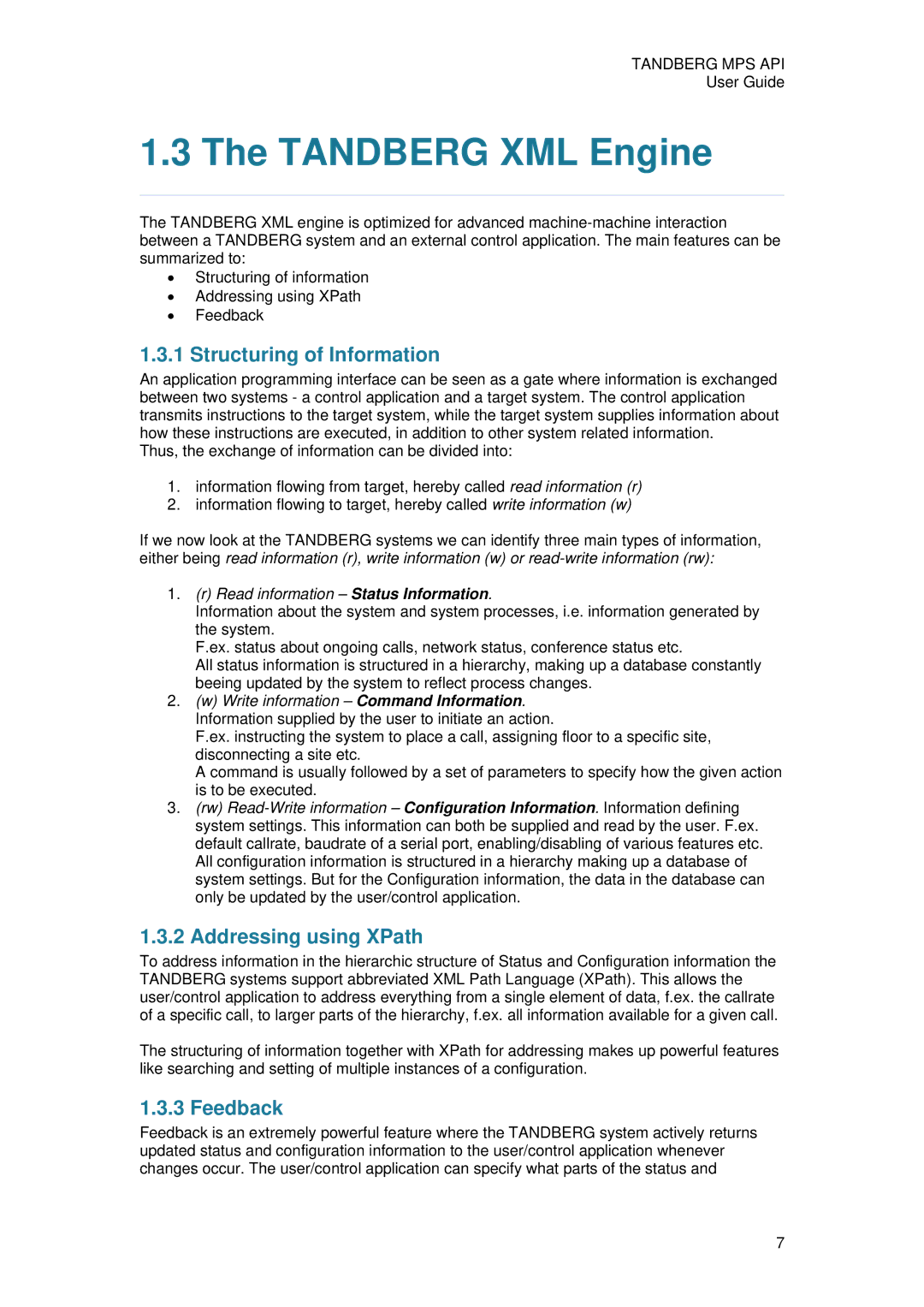TANDBERG MPS API
User Guide
1.3 The TANDBERG XML Engine
The TANDBERG XML engine is optimized for advanced
•Structuring of information
•Addressing using XPath
•Feedback
1.3.1 Structuring of Information
An application programming interface can be seen as a gate where information is exchanged between two systems - a control application and a target system. The control application transmits instructions to the target system, while the target system supplies information about how these instructions are executed, in addition to other system related information.
Thus, the exchange of information can be divided into:
1.information flowing from target, hereby called read information (r)
2.information flowing to target, hereby called write information (w)
If we now look at the TANDBERG systems we can identify three main types of information, either being read information (r), write information (w) or
1.(r) Read information – Status Information.
Information about the system and system processes, i.e. information generated by the system.
F.ex. status about ongoing calls, network status, conference status etc.
All status information is structured in a hierarchy, making up a database constantly beeing updated by the system to reflect process changes.
2.(w) Write information – Command Information. Information supplied by the user to initiate an action.
F.ex. instructing the system to place a call, assigning floor to a specific site, disconnecting a site etc.
A command is usually followed by a set of parameters to specify how the given action is to be executed.
3.(rw)
1.3.2 Addressing using XPath
To address information in the hierarchic structure of Status and Configuration information the TANDBERG systems support abbreviated XML Path Language (XPath). This allows the user/control application to address everything from a single element of data, f.ex. the callrate of a specific call, to larger parts of the hierarchy, f.ex. all information available for a given call.
The structuring of information together with XPath for addressing makes up powerful features like searching and setting of multiple instances of a configuration.
1.3.3 Feedback
Feedback is an extremely powerful feature where the TANDBERG system actively returns updated status and configuration information to the user/control application whenever changes occur. The user/control application can specify what parts of the status and
7
